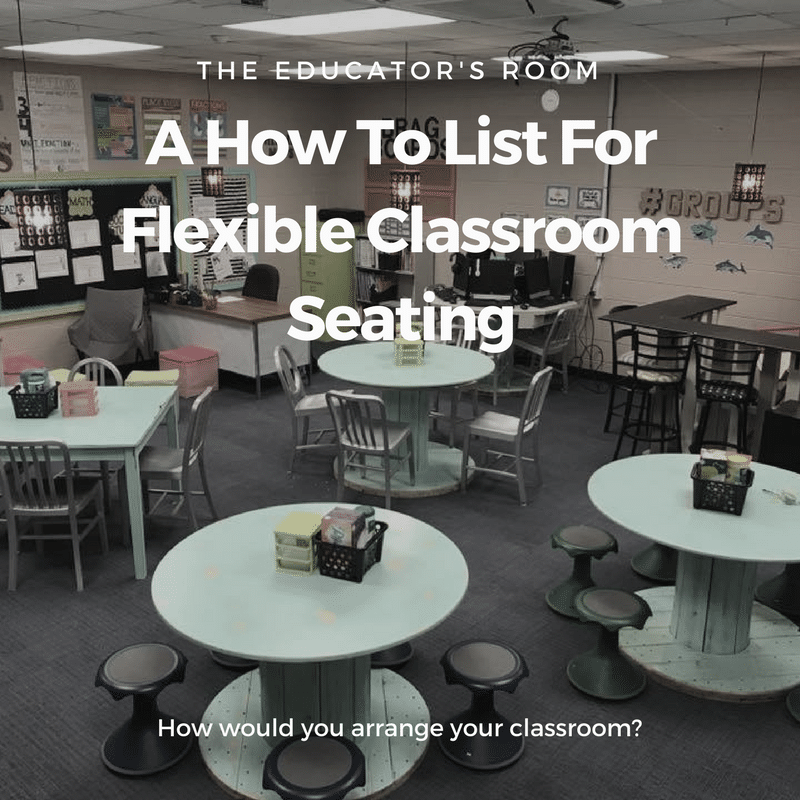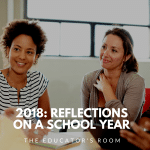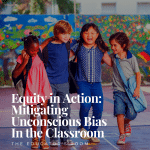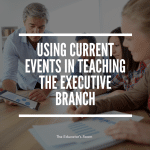I don’t know why it took me so long to jump into flexible classroom seating. After 27 years of dodging clunky desks, tripping over backpacks and watching kids fidget uncomfortably in their hard plastic seats, I had had enough.
I’ve had classes as large as 38, and it just was too hard to fit that many desks in my small classroom. I needed more space, and so did my students! This year, my middle school students came back to school with flexible classroom seating, and it’s been amazing! To help you jump in, I created a how to list for flexible classroom seating.
Step One: Start small.
When I first began teaching a reluctant reader class years ago, I noticed how physically uncomfortable my students were when I asked them to read for an extended period of time. Middle school kids come in all shapes and sizes, and I figured if I could create a more comfortable space to relax and read, I’d at least get them in a good mood! I ended up purchasing four Big Joe bean bag chairs from Amazon – they’re designed for dorm rooms, and fairly durable.
The first year my kids fought over them every day, so I came up with a ‘bean-bag rotation’ chart which did the trick. At the end of the year, I asked the PTA for funding for a few more and built up my first flexible seating. When other teachers saw the way the kids would relax and focus, they even brought in old bean bags from home that their children never used. I’m up to at least a dozen this year, and they still are the preferred place for reading and collaborating.
Step Two: Look for deals.
I started scouring the internet for cheap, functional furniture and seating. I found these foldable chairs for $5 each, and discovered these stools
on Amazon. My local Goodwill has been an amazing source for items such as clipboards
, pillows, and various durable furniture. And since I live in a college town, there are always discards around for free! I’ve heard the free pages on Facebook are a great resource, too. I put an ad out on our Nextdoor Neighbor app, and had a few donations trickle in that way.
Step Three: Ask for help.
When I thought about getting rid of 20 desks and replacing them with tables, I got a bit nervous. I knew my students would be more comfortable with tables as flexible classroom seating, but how would I find enough? I started asking family and friends if they had anything they weren’t using anymore or wanted to donate to my classroom. I was surprised by the number of people who had old folding tables and chairs in their garages!
Also consider asking your custodian, the principal, and your students’ families for donations – once you put your wishes public, I know you’ll be amazed at what turns up. Remember, you can always replace a table or chair if something better comes along. I even put contact paper on an old card table I was given and it looks awesome!
Step Four: Watch what the kids gravitate towards.
Just like with the bean bags, I started small and watched what the kids did. I noticed who liked stools, who needed a spinny chair, and who wanted to plop or flop on the bean bags. Not only could I determine some learning tendencies (the kid reading on his belly every day clearly needed some tactile stimulation to focus) but I also could see who was assertive (they usually claim the folding chairs) and who was easy-going (they just sat wherever there was space). I have one upholstered armchair that rotates and I’ve noticed certain kids really like to sit there and gently move as they read and write, so I’ll look for more of those. I’d also like more two-seaters for those who like to constantly collaborate.
Step Five: Decide what battles you want to fight, and let go of the rest.
Like anything new, there are going to be challenges and unexpected events – and awesome surprises. Many people thought I was a bit crazy to attempt flexible seating in middle school, but I did it anyway. I established expectations around the beginning of class (students must be at a table for attendance/mini-lesson) and that I would announce when flexible classroom seating was ok. I created a seating chart – I actually let students choose their seats for the first month, and then I’ll rotate them around once I get to know them. I advised that they should try multiple locations and seats.
I carefully organized the room into learning spaces – I have an AVID college corner, a row of bean bags by the classroom library, boxes of clipboards and headphones near the back, and even turned an old shelf board into a lap desk. I stationed a fan by the spinny chair and let kids sit there and feel the cool air when they need to calm down. At first, I thought I would arrange the seats with certain desks, but I noticed the kids moved them around during the day, so I let that go. Sometimes kids have been under tables, and sometimes they whisper more on the bean bags. Occasionally they crowd too many bodies onto the ottoman, but we’ve made it work. I think on my feet a lot, but I’m also able to really get more connected and it feels less teacher-dominated and much more student focused since I’ve used the flexible classroom seating. I’ll never go back!







good day
We are currently investing this topic of flexible seating in the senior school – grade 8 to 12. This is in South Africa, in Pretoria. We are not sure that it can be conducive to all subject areas. Perhaps your languages and subjects lending itself to discussions such as History. But Math and Science?
Also the pupils are 14 – 18 years old…. Your thoughts please?